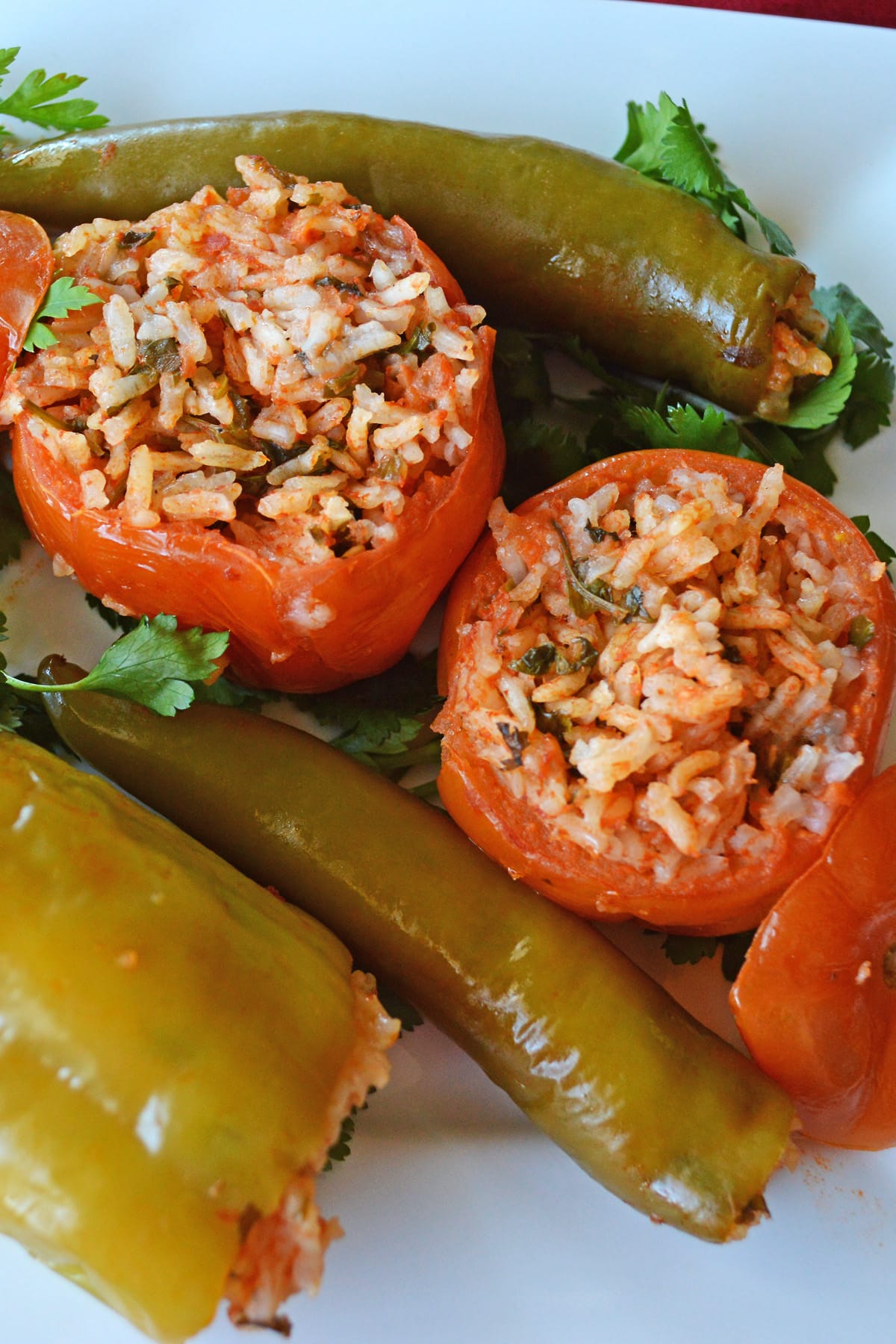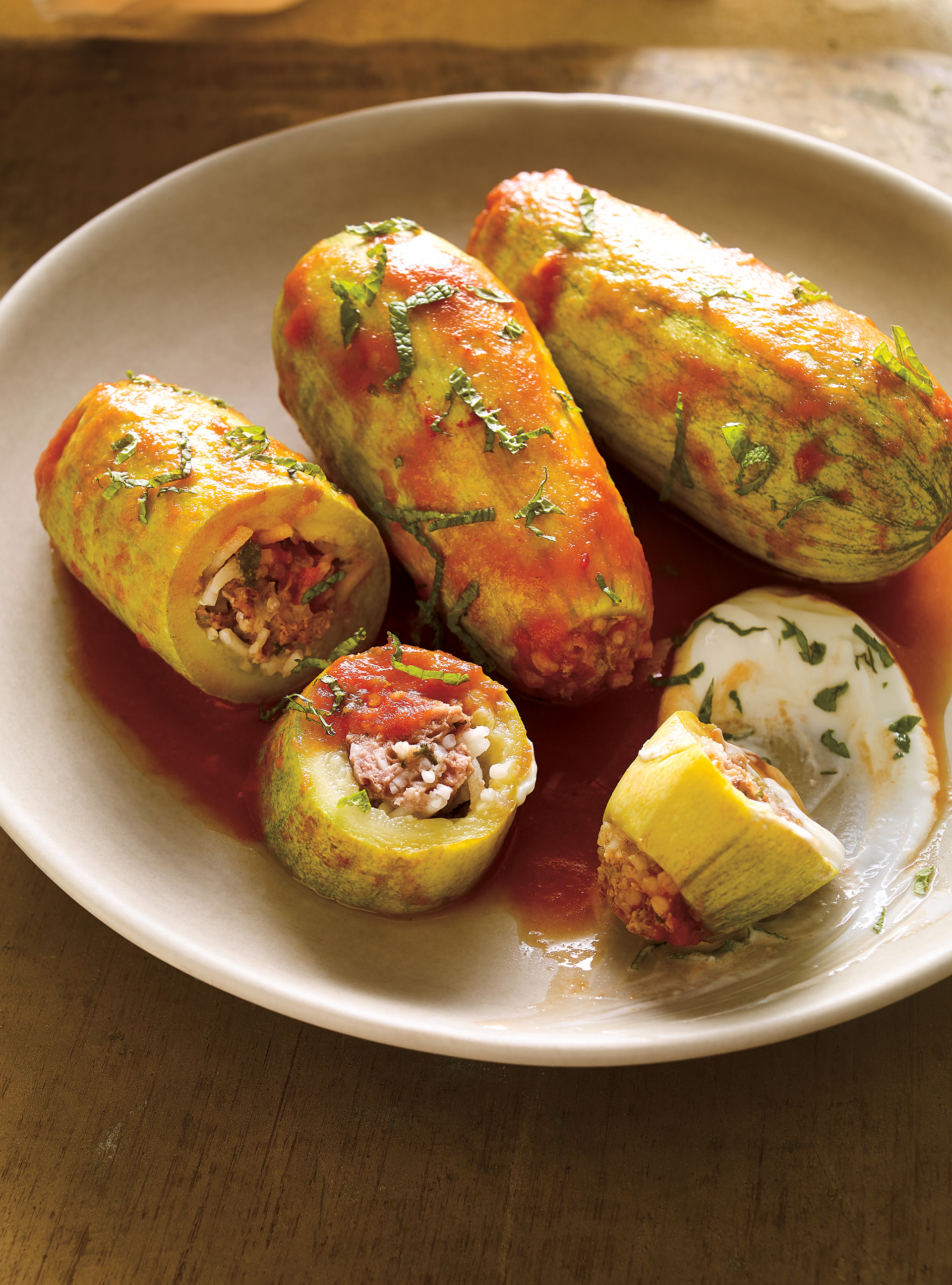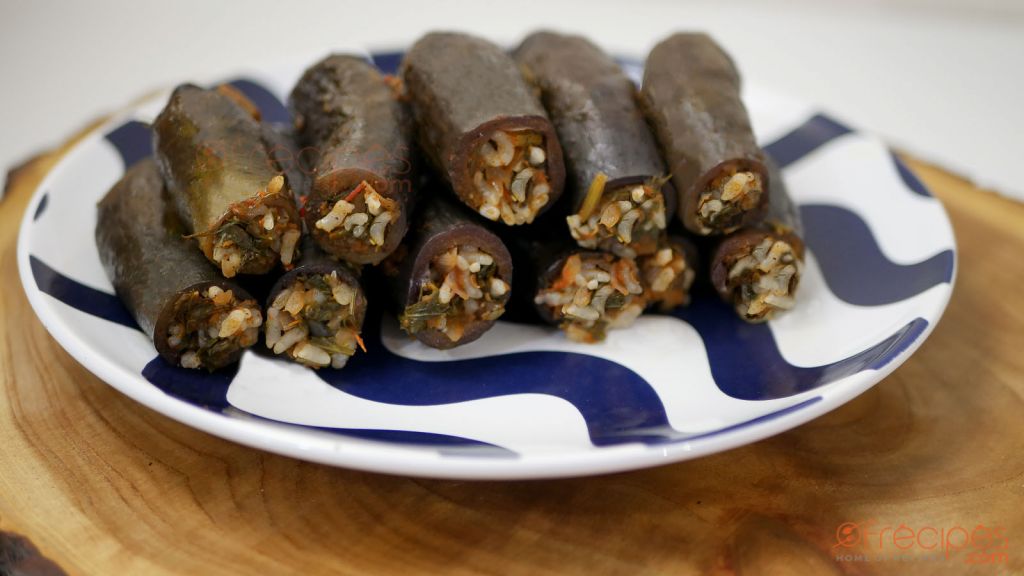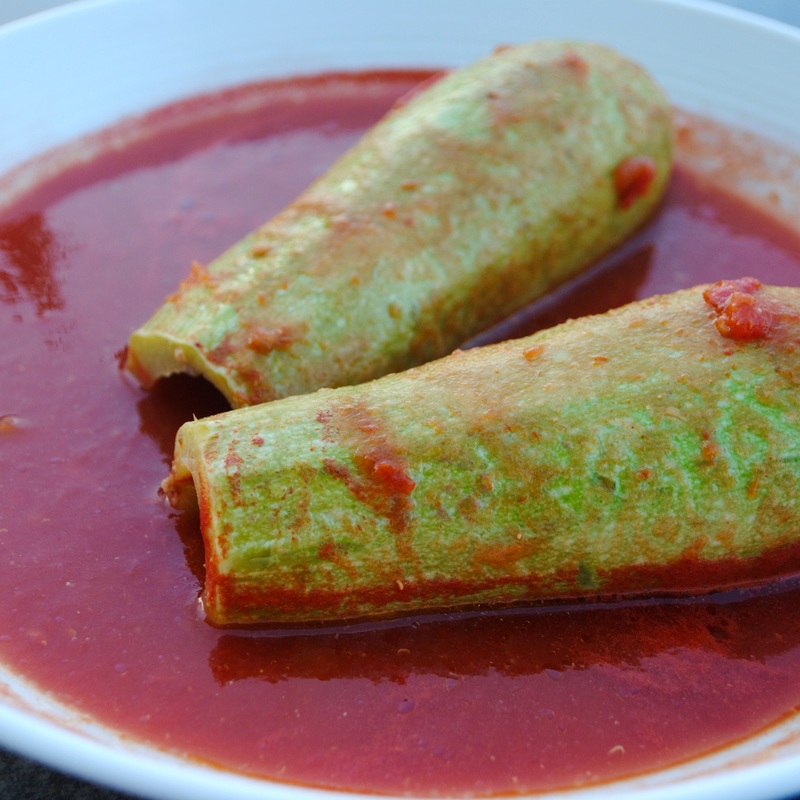Mahshi
محشي ,دولمة ,dolma, mahashi
Dolma is a family of stuffed dishes associated with Ottoman cuisine, typically made with a filling of rice, minced meat, offal, seafood, fruit, or any combination of these inside a vegetable or a leaf wrapping. Wrapped dolma, specifically, are known as sarma, made by rolling grape, cabbage, or other leaves around the filling. Dolma can be served warm or at room temperature and are common in modern cuisines of regions and nations that once were part of the Ottoman Empire. Stuffed vegetable dishes have been a part of West Asian Cuisine for centuries.[better source needed] Recipes for stuffed eggplant have been found in Medieval Arabic cookbooks and, in Ancient Greek cuisine, fig leaves stuffed with sweetened cheese were called thrion. The word dolma, of Turkish origin, means "something stuffed" or "filled". (A Turkish share taxi is called a dolmuş for similar reasons). In some of the former Ottoman countries, native names have been retained or have blended with Turkish language terms, for example, in the Arab states of the Persian Gulf and Damascus, stuffed leaves are called mahshi yabraq or mahshi brag, a combination of the Turkish word for leaf (yaprak) and the Arabic term for stuffed (mahshi). The origins of dolma, as suggested by The Oxford Companion to Food, likely stem from Armenian culinary traditions before becoming integrated into Turkish cuisine. William Pokhlebkin, a specialist on culinary history and cookbook author, contends that the dish's inception traces back to Armenian culinary heritage: Several dolma recipes were recorded in 19th-century Iran by Naser al-Din Shah Qajar's chef, including stuffed vine leaves, cabbage leaves, cucumbers, eggplants, apples, and quinces, with varied fillings prepared with ground meat, sauteed mint leaves, rice and saffron. Iraqi Jewish families have a version of dolma with sweet and sour flavors that were not found in other versions. Dolma are part of cuisine of the Sephardic Jews as well. Jews in the Ottoman Empire used locally grown grape leaves and adopted the Turkish name of the dish.
Source: Wikipedia
Recipes
Mahshi, stuffed zucchini and bell peppers - Taste of South Sudan
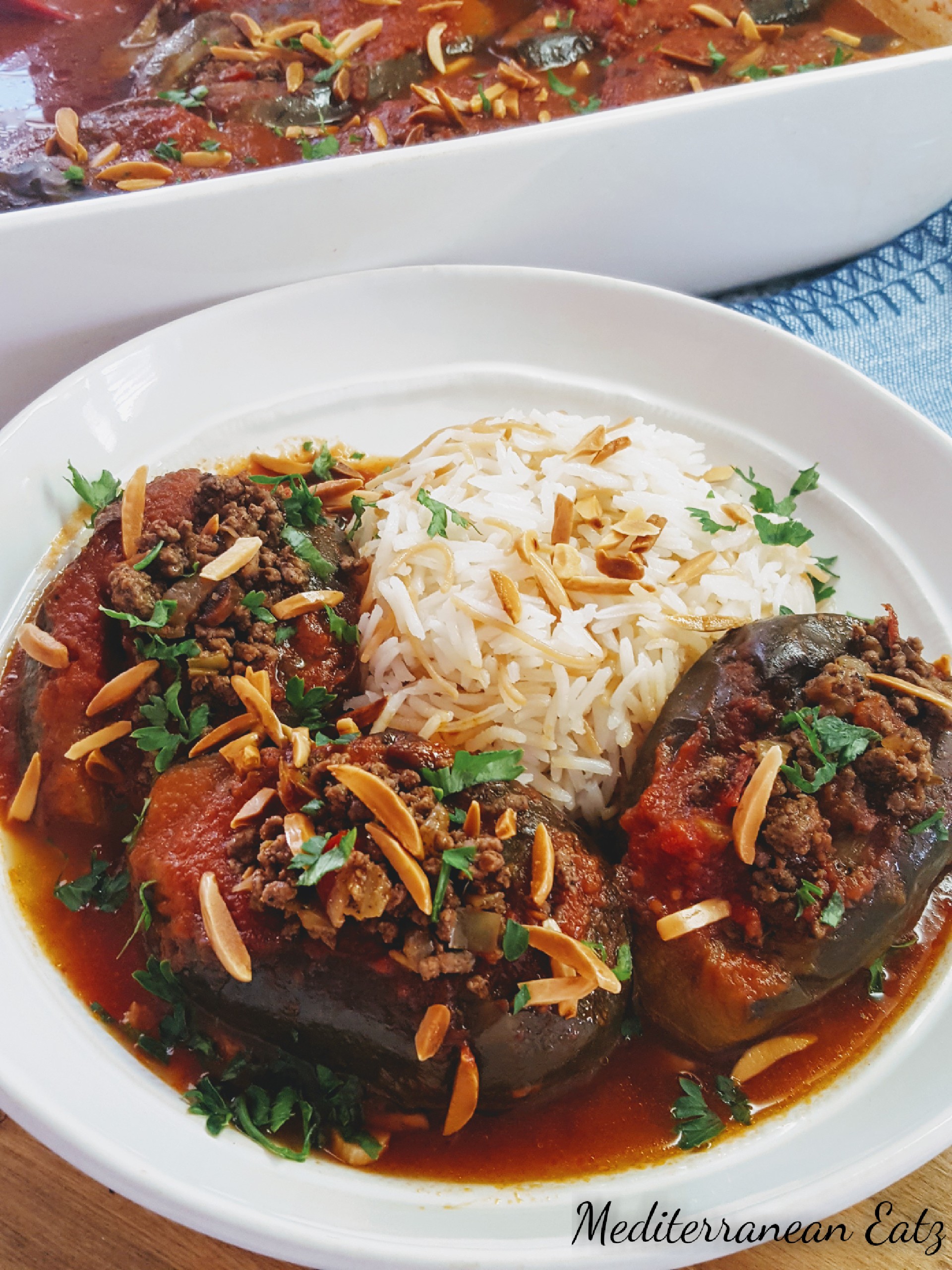
SHEIKH AL-MAHSHI (Meat Stuffed Eggplant in A Tomato Sauce) - Mediterranean Eatz



